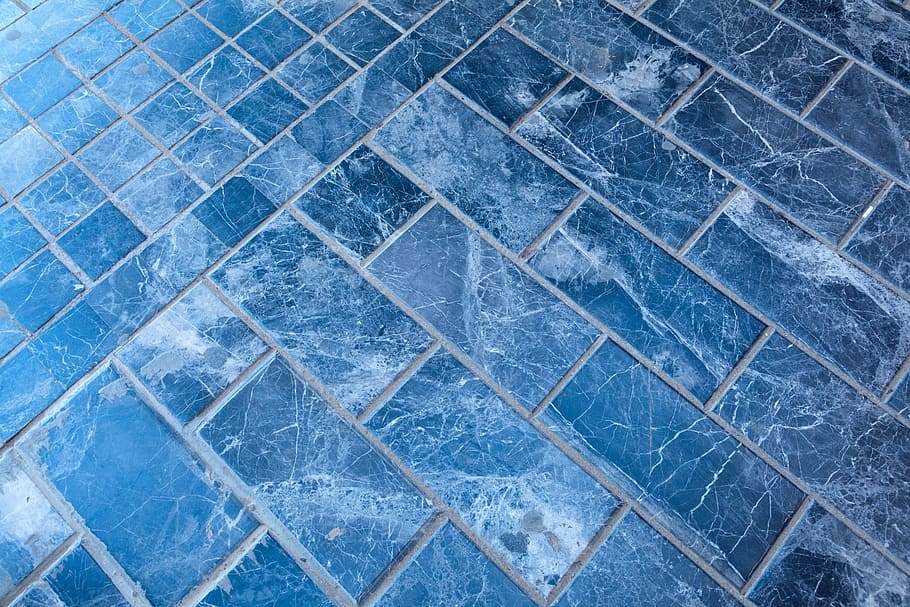Natural stone flooring
Contents |
[edit] Introduction
The term ‘flooring’ refers to the lower enclosing surface of spaces within buildings. This may be part of the floor structure, such as the upper surface of a concrete slab or floor boards, but typically it is a permanent covering laid over the floor. There are many types of flooring materials available including stone.
For more information see Types of flooring.
[edit] Characteristics of stone
Stone is a natural substance quarried or mined from the earth. Due to certain inherent characteristics (such as heat retention, durability, ease of cleaning and so on), natural stone may be a desirable material for the production of flooring tiles.
For flooring applications, one important aspect of natural stone is its absorption rating. This refers to the degree to which a material is porous, with the more absorbent being more susceptible to staining and cracking damage. These ratings include:
- Non-vitreous (highest absorption level, making it susceptible to staining, cracking and poor slip resistance).
- Semi-vitreous (less porous, but still susceptible to damage from excessive liquid).
- Vitreous (even less porous than semi-vitreous, making it suitable for low to mid traffic floors).
- Impervious (relatively waterproof, easy to maintain and suitable for high traffic floors).
Most natural stone flooring materials (other than those with an impervious absorption rating) require some type of regular sealing treatment to protect them from moisture damage.
[edit] Types of stone flooring
The major rock groups are igneous, sedimentary and metamorphic. The unique characteristics of each are due to the complex geological processes that have impacted upon it, creating many different types of structure, texture and colour.
Different types of stone lend themselves to different uses, and some are more commonly used as flooring materials than others. The five most common types of natural stone used for flooring include:
[edit] Flagstone
A flagstone (sometimes called a ‘flag’) is a flat slab of stone used for paving, walkways, driveways, patios and other outdoor applications. Since the Saxon period, flagstones of various sizes were used for flooring in and around castles and other structures. It has also become popular in modern applications due to its ease of maintenance and affordability.
Traditionally, natural flagstones are quarried from sedimentary rock. This sedimentary rock can have various compositions and characteristics. One of these is the distinct stratification (or bedding planes) which allows the stone to be easily cleaved, i.e readily separated, into largish pieces. It is frequently a fine-grained sandstone interbedded with thin, shaly or micaceous layers, but can also be a limestone.
Flagstone is available in numerous colours – such as buff, red and blue – which are usually determined by the natural cement material existing within the matrix of the stone.
Depending on the application, flagstone tends to be durable and weather resistant and can be cut into smaller pieces to create interesting patterns. It also provides a naturally slip-resistant finish if properly maintained.
[edit] Granite
Granite is an igneous rock composed of quartz, mica and feldspar. It has an impervious absorption rating, which makes it suitable for flooring applications that will require good resistance. It is extremely tough and can range in colour from light grey to black, pink, blue and green, according to the mineral content.
[edit] Limestone
Limestone consists of calcium carbonate formed at the bottom of shallow lakes and seas that has been compacted over time. Travertine, another commonly used natural flooring material, is a type of limestone.
The primary source of calcite in limestones is marine organisms although there are other sources. The presence of these organisms means that the stone often has fossil inclusions that form an attractive feature when the stone is polished or honed. It can be categorised as either soft or hard limestone. Various colours can be found as a result of the presence of different minerals in the limestone.
Limestone lends itself to use as floor tiles throughout a building. However, its vitreous absorption rating makes it suited for low to mid traffic applications.
[edit] Marble
Marble is a metamorphic rock that is predominantly composed of calcite or dolomite crystals. It is characterised by its crystal-like texture which is formed by limestone being changed by a combination of heat and pressure. It is both hard and compact.
Marble has been used as a building material for centuries. As a type of natural stone flooring, it is a classic substance that is associated with elegance. It wears more quickly than granite and is more susceptible to staining.
[edit] Sandstone
Sandstone is composed of quartz particles that have eroded from other rocks, commonly granite, and cohered together with natural cement minerals in ground water before being compacted. The stone’s colour depends on the colour of the sand but tends to warm reds, yellows and oranges.
While sandstone can be relatively easy to install, it should not be used in places that experience high foot traffic. It is extremely porous and delicate in comparison to other natural flooring materials and requires considerable care. For instance, solutions that contain acid or alkaline substances should not be used to clean sandstone.
[edit] Related articles on Designing Buildings Wiki
Featured articles and news
Moisture, fire safety and emerging trends in living walls
How wet is your wall?
Current policy explained and newly published consultation by the UK and Welsh Governments.
British architecture 1919–39. Book review.
Conservation of listed prefabs in Moseley.
Energy industry calls for urgent reform.
Heritage staff wellbeing at work survey.
A five minute introduction.
50th Golden anniversary ECA Edmundson apprentice award
Showcasing the very best electrotechnical and engineering services for half a century.
Welsh government consults on HRBs and reg changes
Seeking feedback on a new regulatory regime and a broad range of issues.
CIOB Client Guide (2nd edition) March 2025
Free download covering statutory dutyholder roles under the Building Safety Act and much more.
AI and automation in 3D modelling and spatial design
Can almost half of design development tasks be automated?
Minister quizzed, as responsibility transfers to MHCLG and BSR publishes new building control guidance.
UK environmental regulations reform 2025
Amid wider new approaches to ensure regulators and regulation support growth.
The maintenance challenge of tenements.
BSRIA Statutory Compliance Inspection Checklist
BG80/2025 now significantly updated to include requirements related to important changes in legislation.
Shortlist for the 2025 Roofscape Design Awards
Talent and innovation showcase announcement from the trussed rafter industry.























